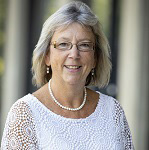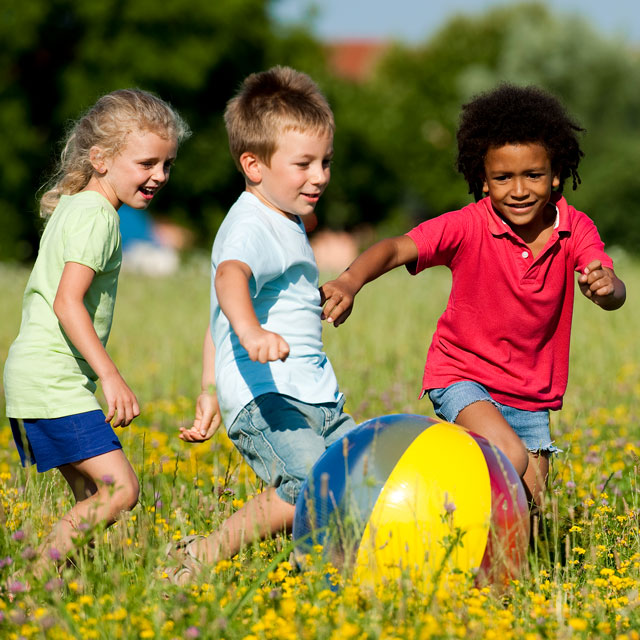Nationally we have witnessed increased rates of childhood obesity and the use of technology by young children, which has resulted in less time engaged in physical activity. Yet we know that physical activity can support bone health and prevent obesity, promote self-confidence and other social-emotional skills, and facilitate the development of school readiness skills (i.e., motor, language, and social skills).
Preschoolers’ physical activity is typically supported in three ways:
- structured motor interventions (i.e., physical or occupational therapy for children with motor goals on IEPs),
- unstructured motor and music movement, where a teacher leads motor experiences for the whole class, and
- unstructured motor play (i.e., recess).
The National Association for Sports and Physical Education (NASPE) has guidelines regarding structured and unstructured motor play for preschoolers. Do you think NASPE recommends:
- 45 minutes total per day (combined structured and unstructured)
- 30 minutes of each (structured and unstructured)
- 60 minutes daily of structured physical activity plus 60 minutes of unstructured physical activity
If you guessed one hour of each type, you are correct. Yet, how many preschoolers do you know who have access to this much physical activity? We need to do better.
If we consider how to link physical activity to other areas of school readiness (i.e., the development of social, language, and motor skills, prereading, premath), we can intentionally encourage physical activity across every preschoolers’ day. Here are four ideas to consider:
Create motor opportunities to ensure that children with a range of abilities have opportunities to participate in physical activities. For example, consider how a child in a wheelchair might participate in a relay, how a child with autism might be encouraged to interact with peers during a ball passing game, or how a child with Down syndrome might be partnered with a peer as they go through an obstacle course.
Embed gross motor opportunities across the curriculum. Consider selecting read aloud books that have the potential to embed interactive gross motor movements into literacy activities (i.e., Going on a Bear Hunt). Include motor games (i.e., bean bag throw, hopscotch) that reinforce shape, color, letter, and number recognition. Add movement activities to early science lessons. For example, when studying animal habitats, children can do hands-on art and motor activities in which they move like different animals, such as a horse (gallop), frog (leap), rabbit (hop), or bird (fly). Meanwhile they might also draw pictures of animal habitats, their footprints, foods, and movements.
Take physical activity breaks throughout the day. During morning meeting, children might stand up and dance to a song, turn and face a partner and toss scarves back and forth to one another 10 times, or move around the circle imitating various animal moves (i.e., hop, crab walk, slither, gallop). Also, as children prepare to transition home or come inside after playing outdoors, a teacher might lead them in a short series of yoga or stretching activities.
Share ideas for physical activities with families. There are many ways that families can support children’s motor development at home using readily available materials. For instance, a laundry basket or bucket and rolled up socks can quickly turn into a game as family members take turns tossing the socks into the basket or bucket from varying distances. Also, using dish towels, a child and his sibling might toss them in the air and catch them, keeping track of how many times in a row they can do this successfully.
So, let’s stop passing the remote and instead encourage young children to engage in physical activity throughout the day. By doing so, we can support skill development across domains, bolster children’s self-esteem and self-confidence as they learn new skills, and create healthy habits that contribute to quality of life.
If we reframe our ideas about physical activity and gross motor play, we just might increase the physical activity level of all children, increase social and motor opportunities, and increase the academic and nonacademic outcomes of children as we thoughtfully plan for more structured physical activities versus free play activities. Think of it this way: Motor movement activities serve as a building block for all other areas of development. Simply put, providing intentional strategies to support development during physical activities is a necessity, not a luxury.

Michaelene M. Ostrosky
Dr. Michaelene M. Ostrosky (ostrosky@illinois.edu) is the co-principal investigator on the Institute of Education Sciences–funded Children in Action Motor Program for Preschoolers (CHAMPPS) grant.
Biography current as of 2019

Paddy C. Favazza
Dr. Paddy C. Favazza (Patricia.Favazza@umb.edu) is the co-principal investigator on the Institute of Education Sciences–funded Children in Action Motor Program for Preschoolers (CHAMPPS) grant.
Biography current as of 2019


